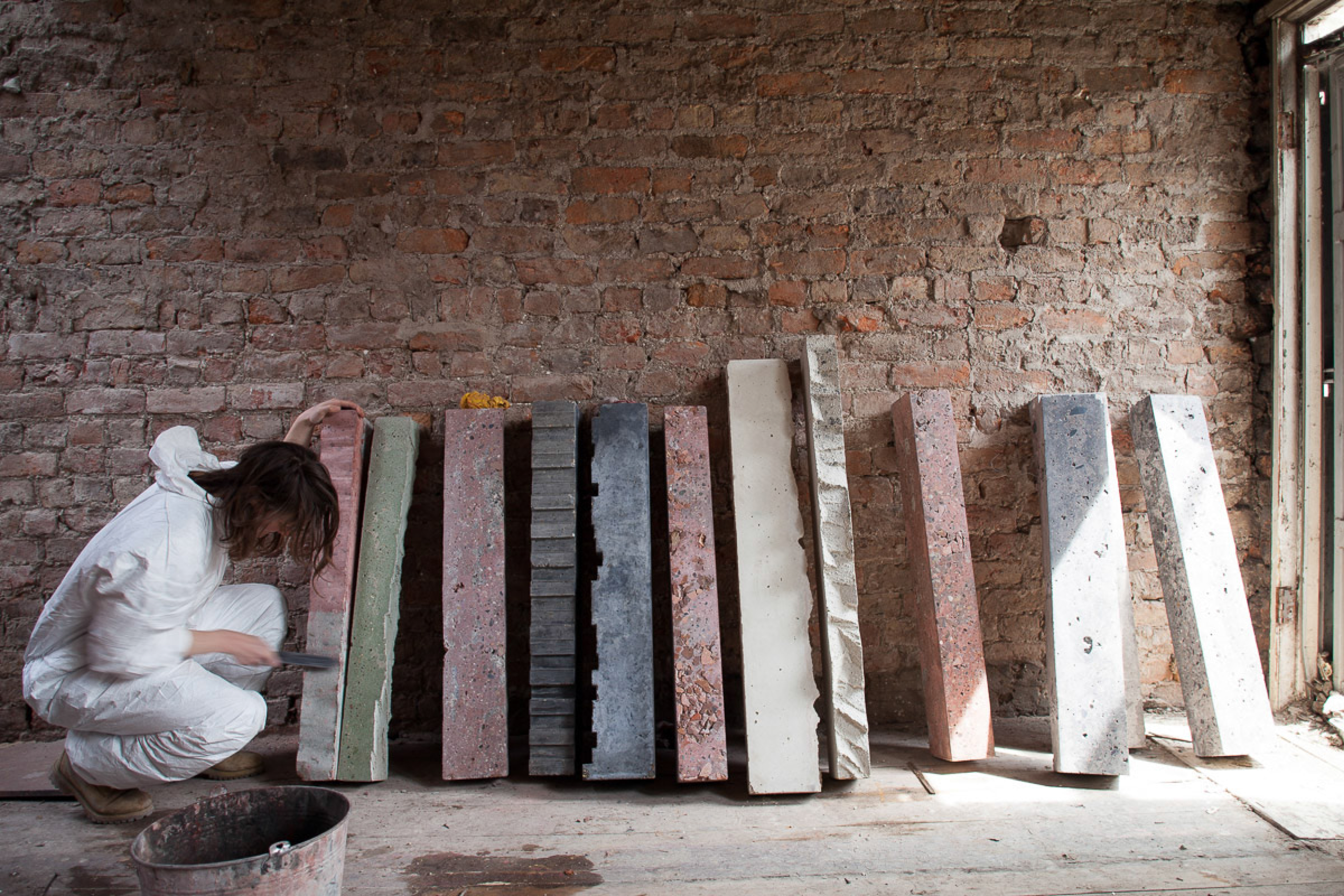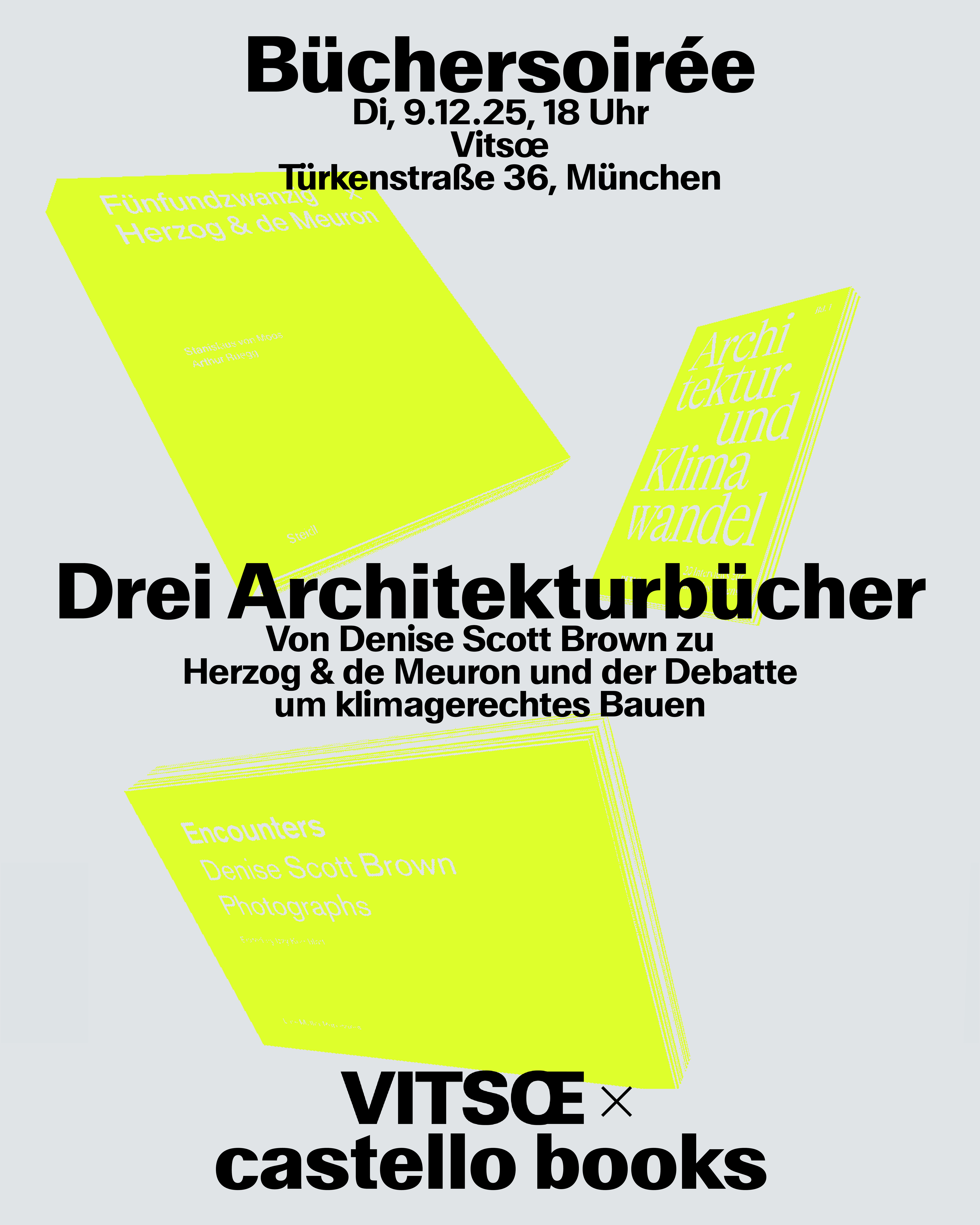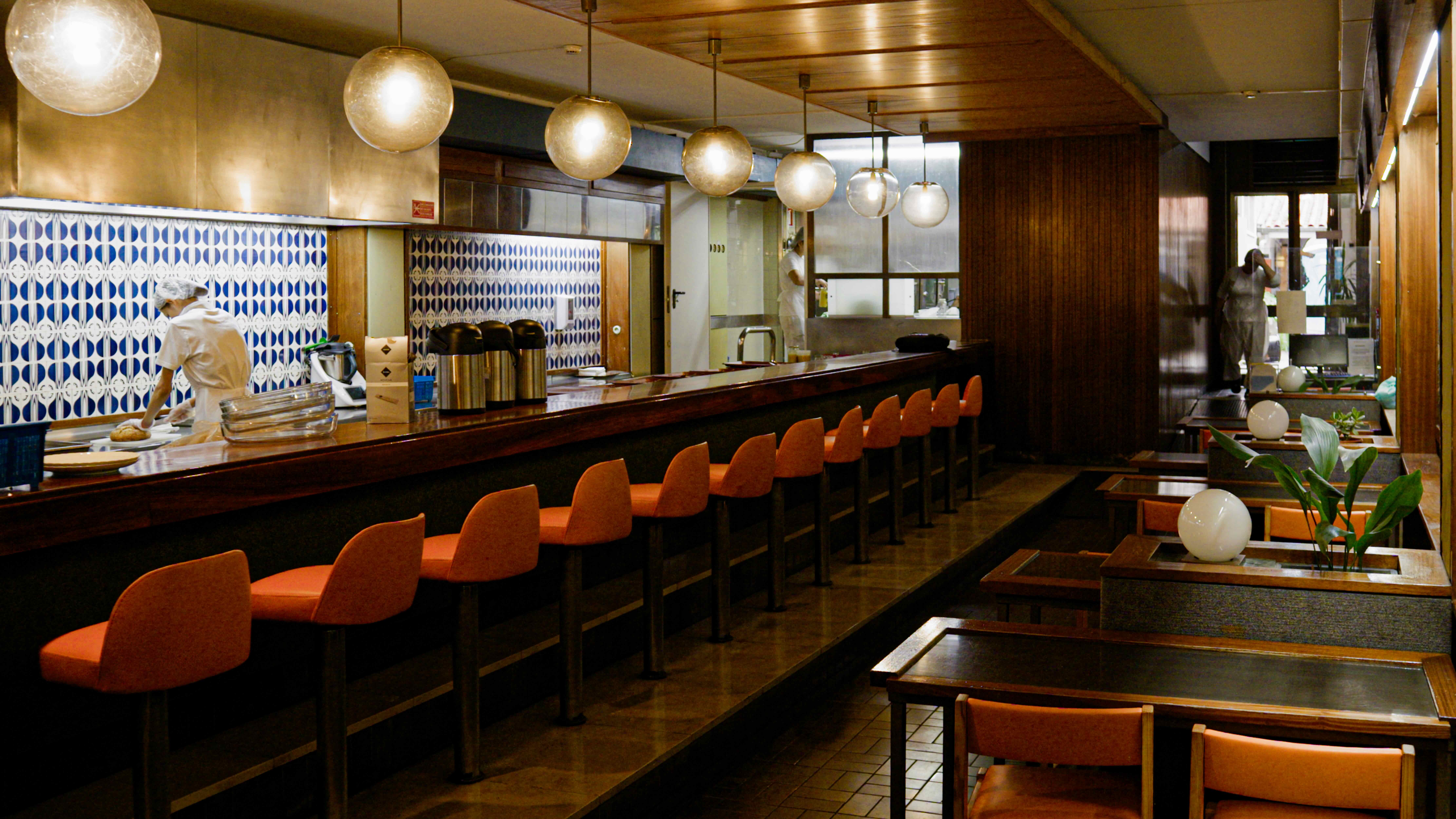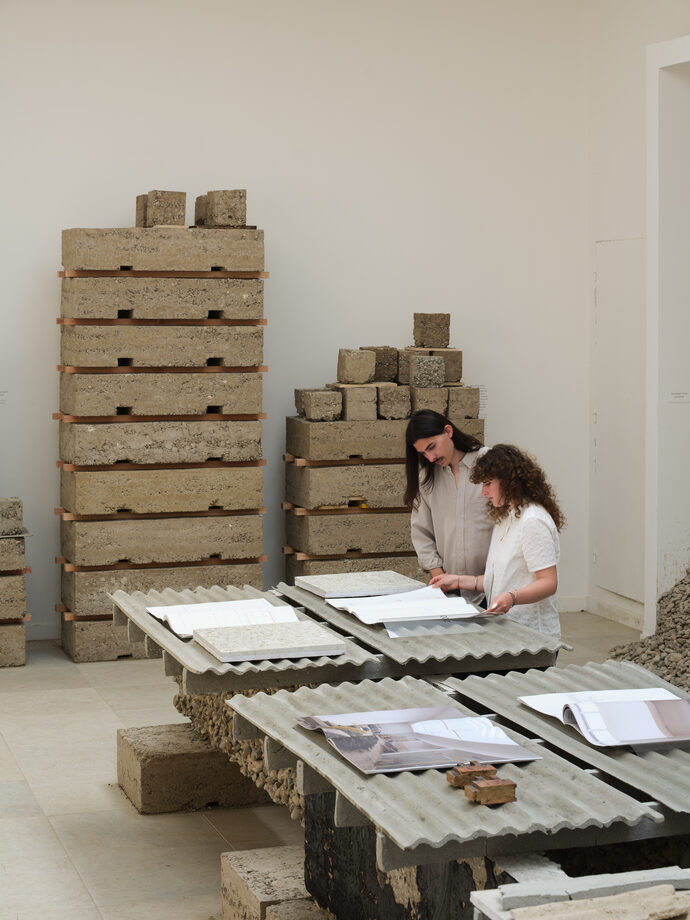Anybody strolling through the Dorsoduro district of Venice with Luca Nichetto must get the impression that the entire place is like one large family. With an unmistakably Venetian "tzssss", the designer utters the occasional resonant "tzsssiao", stopping again to exchange a few words with the friends he chances upon on the next campo and, whenever he happens to pass any of his friends' offices, he insists on quickly introducing them. Luca Nichetto is a Venetian - nonetheless, this Italian designer has long had a foothold in Stockholm, as well, where he will be opening a second studio in the near future.
Many designers dream about collaborating with Italian companies and one day ending up in Italy. You, by contrast, are different: yourself an Italian, for some time now you have been collaborating increasingly with companies from Sweden and Great Britain. How did this come about?
Luca Nichetto: I wanted to experience new things, which is why I embarked on my collaboration agreements. To some extent, however, I also want to show my fellow designers in my generation that remaining fixated on Italy does not get us anywhere. There is a design world outside Italy even though we do of course think we are much cooler than everybody else (laughs). Design is international. The kind of national design that is always being held up here in Italy has not existed for years now.
All the same, "Italianità", that typically Italian quality in design - whatever it might be, exactly - has a very good reputation as far as the public is concerned. Many people even act as if design were a purely Italian affair.
Nichetto: Quite honestly - I think that we Italians are much more conservative than other European countries. We focus on the past, on our history, which means that we lose sight of the future. This attitude really is typically Italian! It is probably due to the fact that Italy is a relatively young country and is made up of a large number of individual states, with each state having its own history and tradition. People's sense of belonging is very closely associated with their relevant regional culture and traditions. However, in the final analysis we all live in the here and now and need to understand what is happening at the moment in order to make plans for tomorrow and to come up with projects for the future instead of restricting ourselves to commenting on the past.
What shape do you think such projects might take?
Nichetto: In Italy there have been problems between the north and the south for more than 70 years. Everybody knows this, but still nothing happens. We are lethargic, we simply tell ourselves that this is the way it is and don't do anything about it. And with Berlusconi nothing has changed: the majority are dissatisfied but they still don't do anything to alter the political situation. Transferring this to the design world, I repeatedly observe how many designers complain that Italian companies prefer foreign designers. But nobody seriously questions why things are the way they are, i.e., simply because as of a certain point in time foreign designers had become better than their Italian counterparts. We need to accept this and attempt to get up to the same standard. This is the only way to change things.
The young generation of Italian designers in particular has a great historical burden to bear: the fact that they are constantly compared with the great masters from the golden age of Italian design. How does your generation cope with this?
Nichetto: The "maestri" who are still going - Mendini, Branzi and one or two other theoreticians - actually believe that once they are gone there can be no more design! One of the reasons why there is an enormous divide between the generations is that the maestri have not passed on any ideas. They did not have any pupils or successors. Because I live in Venice and not in Milan this is of no particular interest to me. Italian design is often equated with design from Milan but the design scene in Italy is considerably more diverse than that - and I am living proof of this. I enjoy breaking with these clichés. In my experience, this is a much better way to live because then you do not have to keep on complaining constantly and can just get on with things. This is the way that I have done things and when I look back at my projects, I find some of them impressive but there are others that I would not handle the same way today. Nonetheless, they are part of an experience that has got me where I am today - after all, this whole thing is a process, too. Because I personally did not have any classical design training from one of the relevant Italian universities I can deal with this much more easily and I exchange ideas with designers from other countries.
How did your career begin, what were the decisive stages in it?
Nichetto: I do not come from Venice but from Murano. On that small island, everything revolves around glass art. My grandfather was a master glass blower, throughout my childhood I was fascinated by the people who came to Murano with their sketches - and my grandfather implemented their ideas. For me, creating something, realizing it was part of everyday life. The story of an object starts with a sketch on a piece of paper. I understood this very early on.
How did craftsmanship and industrial design come together in your work?
Nichetto: For me, the glass department at the school of art was much better than the university because real craftsmen were trained there, skilled workers who also needed to know something about designing. It was quite normal for us trainees to knock on the doors of various companies in Murano to sell our sketches. We did this in order to earn ourselves some more money for our vacations. I then later discovered that this could actually become a profession. I once showed my sketches to Simon Moore, the director of Salviati, a highly respected craft manufacturer of glass in Venice. He bought my entire portfolio, explaining to me at the same time that none of it would be produced but that I could come round regularly and that he would explain to me how the work processes at Salviati were run. And this is how a world was opened up to me by chance. At the time, Ingo Maurer, Ross Lovegrove and many other designers came to Salviati - all designers that I knew from school and now got to know personally. Some arrived with little models, others with texts, and they all showed me their ideas. I was fortunate in gaining access to the design world this way. And I am fortunate enough to be able to make a living from my work today.
There must have been quite a friendly atmosphere there, like in a large family.
Nichetto: At the beginning it all seemed very strange to me. I always thought that projects like that were secret. After my final year at the school I then designed some vases for Salviati and within six months they became bestsellers. I have been collaborating with the company ever since. In the meantime, I needed to complete an internship and managed to get hold of a position at Foscarini. At the time, Foscarini was just moving from Murano to Marcondo. With the move, the focus of production also shifted slightly, from pure glass art to more extensive materials. My internship was in the technical department - in other words, on the one hand I was gaining experience in craftsmanship and on the other, I had a job that focused more strongly on the products. After completing the internship I showed Alessandro Vecchiato at Foscarini a number of ideas, all of which he rejected. This then became a kind of game for me until finally I came up with an aluminum luminaire and Alessandro understood that I was experimenting not only with glass but also with other materials. He gave me an opportunity to conduct material research for Foscarini as an external consultant. At the same time, I was recruited by Salviati as design manager for a range of products - and so, for the first years, I collaborated with these two companies, which have really left their mark on me and have brought me closer both to handcrafting and to industrial design.
The sales, the quantities of limited editions, the price in the shops - is all this information important to you when designing?
Nichetto: These things form the basis of the design. I am not a great believer in limited editions. They are good for experimenting but in recent years they have turned into an over-inflated and overrated movement. I tend more to the idea that, for better or for worse, designers should work for people. When an item costs a great deal this means that it is only available to a select group of people. By way of contrast, when manufacturers succeed in keeping production costs low the end product is available to lots of people. This does not necessarily mean that it only costs a little and is design for the poor. Democratic design covers all classes of purchasers and users, rich and poor. Working in a niche is definitely not democratic design.
Sales, however, are also strongly dependent on economic factors, factors that it is impossible for the designer to influence, aren't they?
Nichetto: In the 1950s and 1960s designers had the possibility of flooding the market with large quantities of products because there were only a few manufacturers. Nowadays, by contrast, there are a large number of companies and a great deal of competition. The market has changed, today there are lots of market segments and several different layers of sales. Placing a product on all these levels at the same time is almost impossible. But at least I am attempting to cooperate with different companies, to cover different market segments.
So it is not part of your mission to come up with new typologies?
Nichetto: There are projects that can take this course if the manufacturer and his corporate culture allow for it. However, when collaborating with companies with a high-profile market presence it becomes very difficult to reconcile the two. From my viewpoint, a designer needs to understand the classic typologies inside out, and needs to improve these for the users. What this can mean is simply using a screw in a new and simpler way. It is much more important to respond to problems such as these than to come up with new typologies. With the chair that I have created for Offecct I wanted to design an item of seating that can be manufactured from simple, recyclable materials and transported in its individual parts. All the same, we do not want the chair to turn into some kind of Ikea product just because it can be dismantled into individual parts. Even this could be the start of an approach to a new typology.
At the Salone in Milan the lasting impression is often one that many new products are superfluous. After all, there are so many perfect chairs already, so why are there more and more all the time?
Nichetto: That's true, we need to become much more critical. Following my experiences in Sweden it is important to me to consider the entire lifecycle of an object. This includes not only the time when it is in use. We also need to ask ourselves what happens when our everyday objects get thrown away. This is part of an object's lifecycle even if people do not think about this when they buy it.
Really? Today, though, everybody seems to be talking about sustainability.
Nichetto: When I traveled through Europe sometime ago and was in Germany I saw different waste containers for brown glass, for white glass and for various other types of waste. This was completely new to me, I just disposed of my garbage somewhere or other because nobody pointed out to me that this could be important. However, in the final analysis, this is also a question of the product. Of course, nowadays sustainability is also a good selling point. But this direction interests me a great deal, much more than some kind of complicated theoretical idea. Theories are not my thing at all, I am self-taught, so to speak. Even after ten years of professional life I have never worked in any design bureau apart from my own.
So, is "learning-by-doing" really an advantage, then?
Nichetto: In the beginning it was quite difficult, but once I had decided that my work and my professional life were one and the same thing, and once I had accompanied my girlfriends to Scandinavia I understood that design is everywhere and that it is for everybody. In the Scandinavian countries this is true, as well. In Italy, by contrast, this is hardly the case. Sweden's design history is considerably less repressive. The Scandinavian countries attach importance to the idea of service and they respect our world of thought in their culture. Italy, by contrast, is a manufacturing country. Here, prototypes are almost more important than the usefulness of an object, the craftsmanship with which an object is designed counts for more than its function. My objective is to create a link between these two worlds. Something I also have in mind is the type of design that is modern, functional and democratic - i.e., typically Scandinavian on the one hand and, on the other, super-emotional, extravagant, does not adhere to the normal rules and boasts that typical Italian rapidity. I would like to understand just where these two worlds might intersect.
... this seems to be a difficult undertaking, however.
Nichetto: Not at all. Robo Chair for Offecct, for example, is manufactured in Udine. Initially, we made contact with various workshops in Sweden, but these were unable to produce the chair. We then tried in Italy and we had a concrete prototype one month later.
There is a great glass tradition in Scandinavia, too, but one that differs quite considerably from the Venetian one.
Nichetto: This makes me very curious. During the design fair in Stockholm in February we will be showing a range of vases for Venini, together with other little vases and paperweights that I designed for Skultuna, a Swedish firm with a long-standing tradition that specializes in brass. The exhibition is an experiment aimed at demonstrating how two companies with long-standing traditions can be interpreted by one designer, where they can have things in common. "Venice meets Stockholm" is an idea that I should like to work further on in the future. Not only on a personal level but also in my future projects as a designer.
Interview: Sandra Hofmeister





